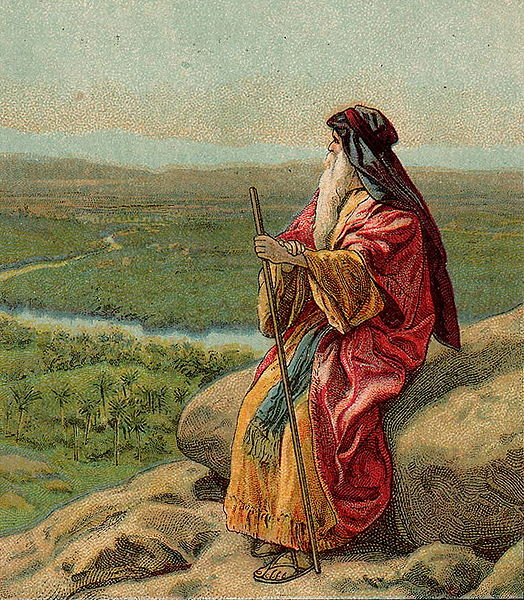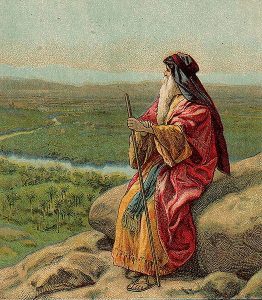 A very big and hearty mazel tov to our friends Anne and Shelley Golombeck upon the wedding this past week of their son David, to Sarah Shevchuk, she from Teaneck New Jersey. Mazel tov to Sarah’s entire immediate and extended family. Mazel tov as well to all the Golombeck’s and mazel tov to David’s grandparents, Anne’s parents, Mr. And Mrs. Moed. The Oisvorfer is indebted to Anne who for many years on his birthday, delivers a home-made cake which the Oisvorfer devours and does not share. May the tradition continue. May David and Sarah merit to enjoy many decades of blissful marriage. Omen!
A very big and hearty mazel tov to our friends Anne and Shelley Golombeck upon the wedding this past week of their son David, to Sarah Shevchuk, she from Teaneck New Jersey. Mazel tov to Sarah’s entire immediate and extended family. Mazel tov as well to all the Golombeck’s and mazel tov to David’s grandparents, Anne’s parents, Mr. And Mrs. Moed. The Oisvorfer is indebted to Anne who for many years on his birthday, delivers a home-made cake which the Oisvorfer devours and does not share. May the tradition continue. May David and Sarah merit to enjoy many decades of blissful marriage. Omen!
Raboyseyee and Ladies:
Eating Fish at the Shabbis Tish by Hand & Moishe’s Last Day
This past Friday night at the shabbis seuda, the Oisvorfer found himself seated to the immediate left of a chosid. What is a chosid? Shoin, for the Oisvorfer’s non-Jewish readers, a chosid may be Jewish person who goes beyond the legal requirements of ethical ritual observance in daily Jewish life. A chosid typically sports a beard, payis (side locks), and wears distinctively modest clotting, typically a white shirt and black pants, accompanied (at least on shabbis) by a frock. Chasidim typically follow a particular rebbe and are also mostly but not always associated with a particular sect. Chasidim, much like ice cream from Baskin & Robbins, come in many flavors; at least 31. And what flavor chosid was the gentleman to the Oisvorfer’s right? Was he a Satmar, or efsher a Lubabitcher? Or was he more of the finger-licking-good Colonel Sanders variety? And the answer: He was both! Indeed, he is both Satmar and Lubabitcher. Ober how can one person be both? And aren’t these two branches of Chasidism mutually exclusive? And the answer is azoy: it’s taka emes that there was a period in time, ich veys, some 30 years ago, when the Satmar and Lubabitcher Chasidim did not see eye to eye; they were at war, mamish! In fact, it was much worse, ober that for another day. Today however, and for those who don’t know, Satmar Chasidim, at least some of them, have totally embraced Lubabitchers and are among their strongest financial backers when it comes to the building of mikvehs (ritual baths) around the world. FYI: Chabad typically undertakes such installations when their shiluchim (missionaries) arrive to far flung cities and countries where they spread their unique flavor of ahavas yisroel. May the RBSO taka bless them and their work.
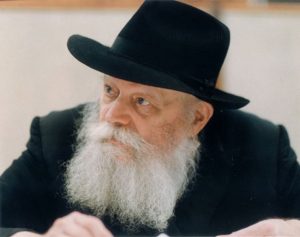 Back to the dual tracked chosid. Shoin, it’s mistama a long story, one he did not share, ober the bottom line after some cursory research is this: while he was born and raised as a Satmar (as an aside, he did admit that his grandfather was a Belzer chosid which further complicates or perhaps enriches his leanings and customs), he has seemingly morphed into a Lubabitcher. And while he speaks yiddish, yinglish, looks and dresses as would kimat any Satmar chosid, his leanings and studies are clearly Lubabitch. And we begin our review of Parshas Nitzovim-Vayaylech with this story why?
Back to the dual tracked chosid. Shoin, it’s mistama a long story, one he did not share, ober the bottom line after some cursory research is this: while he was born and raised as a Satmar (as an aside, he did admit that his grandfather was a Belzer chosid which further complicates or perhaps enriches his leanings and customs), he has seemingly morphed into a Lubabitcher. And while he speaks yiddish, yinglish, looks and dresses as would kimat any Satmar chosid, his leanings and studies are clearly Lubabitch. And we begin our review of Parshas Nitzovim-Vayaylech with this story why?
Because on Friday night when the gifilte fish was being served -and avada many agree that eating gifilte fish during the Friday evening seuda is efsher biblically obligated- a discussion we will pursue when we review Parshas Noiach, the Oisvorfer observed that the chosid, despite having forks -at least two- at his disposal, was instead eating fish with his hands. Perplexed that the chosid would, in 2017, choose to eat fish with his hands in mixed company, the Oisvorfer leaned over and whispered into his ear inquiring as to why he elected to eat fish in that manner.
To that question, the chosid responded azoy: it’s a minhag (custom among chasidim) to eat fish using one’s hands. Shoin, while the Oisvorfer has come across many strange minhogim over the years -including the very well established and popular custom not to repay loans borrowed from friends but instead to ignore them and stop talking to them, Yikes, emes and nebech quite sad – this one took him by surprise. The next question was: what is the source for this unusual minhag? The chosid while cradling a piece of fish, responded by quoting a posik (verse) from Parshas Noiach. And while the Oisvorfer is quite familiar with Sefer Bereishis (Genesis), as well Parshas Noiach, which tells the amazing story of Noiach and the great mabul (flood) which destroyed all of humanity sans Noiach and his family, he could not believe his ears. Where in the heylige Toirah does it mention or talk about eating fish with one’s hands? And the answer? Nowhere! Next: the Oisvorfer grabbed a chumish ober the chosid happily pointed out posik 2 in perek 9. To get more color, we quote pisukim 1 and 2 in their entirety.
| 1. And G-d blessed Noah and his sons, and He said to them: “Be fruitful and multiply and fill the earth. | אוַיְבָ֣רֶךְ אֱלֹהִ֔ים אֶת־נֹ֖חַ וְאֶת־בָּנָ֑יו וַיֹּ֧אמֶר לָהֶ֛ם פְּר֥וּ וּרְב֖וּ וּמִלְא֥וּ אֶת־הָאָֽרֶץ: | |
| 2. And your fear and your dread shall be upon all the beasts of the earth and upon all the fowl of the heaven; upon everything that creeps upon the ground and upon all the fish of the sea, [for] they have been given into your hand[s]. | בוּמוֹרַֽאֲכֶ֤ם וְחִתְּכֶם֙ יִֽהְיֶ֔ה עַ֚ל כָּל־חַיַּ֣ת הָאָ֔רֶץ וְעַ֖ל כָּל־ע֣וֹף הַשָּׁמָ֑יִם בְּכֹל֩ אֲשֶׁ֨ר תִּרְמֹ֧שׂ הָֽאֲדָמָ֛ה וּבְכָל־דְּגֵ֥י הַיָּ֖ם בְּיֶדְכֶ֥ם נִתָּֽנוּ: |
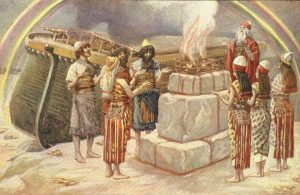 Shoin! And from those few words “into your hand they are delivered” some rebbe many years ago -say 100 at least- decided that fish, which we are encouraged to eat on shabbis, are delivered into their hands, before being further delivered into their mouths. The Oisvorfer could not believe his ears or his eyes. It so happens that dinner was being served in the shul and that the shul has a huge, extensive, and impressive library of seforim and books. Perhaps more than he has seen in many a shul. In any event, the chosid suggested that the words of the parsha are a remez -a hint or sign of sorts- and eating fish based on the words quoted above (with hands) seems to be in order. A sefer by the name of Halichois Chaim was consulted for further clarity and there the Oisvorfer found the following which is translated into English below.
Shoin! And from those few words “into your hand they are delivered” some rebbe many years ago -say 100 at least- decided that fish, which we are encouraged to eat on shabbis, are delivered into their hands, before being further delivered into their mouths. The Oisvorfer could not believe his ears or his eyes. It so happens that dinner was being served in the shul and that the shul has a huge, extensive, and impressive library of seforim and books. Perhaps more than he has seen in many a shul. In any event, the chosid suggested that the words of the parsha are a remez -a hint or sign of sorts- and eating fish based on the words quoted above (with hands) seems to be in order. A sefer by the name of Halichois Chaim was consulted for further clarity and there the Oisvorfer found the following which is translated into English below.
“Our rebbe ate fish with his hands, as well the meat…….” The elucidation on these words tells us that the Minchas Elozor (the Munkatcher rebbe with that title) would in fact eat fish by hand, and cited the verse quoted above as his source. As an aside, the commentary also tells us that the rebbe also ate his egg salad (with onions) and a few other dishes by hand. Bottom line: when it comes to minhogim and traditions, chasiddim are perhaps known by that moniker davka because they follow (albeit at times blindly), what they saw their rebbe do. Oisvorfer research during the week has confirmed that this minhag has become widespread among other Chassidic sects including followers of the Chernobol, Skver, Rachmas Rivka chasiddim, and mistama others. As an aside, one chosid consulted on this fork vs. hand matter argues and suggests that the aforementioned Chasidim do use fork but that others, specifically Satmar and others, do taka use their hands for gifilte fish, herring and at times other foods. He also suggested that the minhag of sharing food from one plate and or eating by hand, brings about a certain camaraderie (though he did not know or use that specific word). As it turns out, though the Oisvorfer never heard of this minhag, it is more widespread than one could have imagined. Seemingly many chassidic sects partake of the fish-to-mouth ritual; the fish fork is seemingly no longer necessary.
Ober what about personal hygiene? Nu, believe it or not, a shtikel discussion on personal hygiene can be found where? In the heylige Gemora of course; lommer lernin (let’s learn it). Says the heylige Gemora (Nedorim 49B) azoy: Reb Yossi and Reb Yehudah were eating porridge out of the same bowl, one with his dirty hands and the other using a utensil. The one eating with the utensil said to the one eating with his hands, azoy: “until when will you keep feeding me your excrement?” The one eating with his hands responded to the one using a fork with a few strong words of his own: “until when will you keep feeding me your saliva?” Ouch! Says the Ran: it is presumed that a person eating with a utensil will place the utensil in his mouth when eating and that he will not wipe it clean before placing it in his bowl again. Such behavior would zicher cause the transfer of some saliva into the bowl and avada that cannot be too pleasing. Ober what about the fellow who used but his fingers? Says the Ran veyter: the one eating with his fingers would zicher wipe them clean of any saliva before sticking them back into the bowl. Ober, says the Maharhso azoy: when the heylige Gemora spoke earlier about the positive aspects of eating porridge with one’s fingers, it was speaking about a person who was eating by himself and not sharing. Ober when one is sharing a bowl, one should zicher be careful of that person’s sensitivities. As to the chosid seated to the right, it was in fact the case that he was eating his gifilte fish out of his own plate. All good.
And the lesson? Mistama they were suggesting -though zicher not practicing what they were preaching, who does? – that one should be a shtikel considerate when it comes to hygiene and germs. Gut gizugt (well said); let’s now take a quick peek into this week’s double header parshas of Nitzovim and Vayaylech and listen in to what Moishe had to say on his last day as CEO and leader of the Yiddin.
Moishe Rabaynu, whose stat sheet of accomplishments and as a team leader will never be matched, is set to retire. He will tell the Yiddin that he has reached the ripe age of 120. It’s his birthday bo bayom (on that very day), he can no longer go about his daily routine. The RBSO has previously told him that he will not be crossing the Jordan into the land. Many agree that this was mamish his last day on the job and in his life. Seemingly he will mark his birthday, retire, and pass away, all in one day. And how do you suppose he marked the day? Nu, is so happens, according to some, that he kept himself quite busy and made the most of it. More below. And while Jeter has been traveling the country visiting each team and collecting gifts, Moishe will, according to some, spend his last day handing out gifts.
One Medrish will tell us that the events of both parshas (and the next two to follow) took place on the last day of his life. Others argue that it would be impossible for all this activity- we’ll read about it soon- to have taken place in one 24 hour period. Others will tell us that it wasn’t an ordinary 24 hours; does, or did a day ever have more than 24 hours? Es ken zeyn (possibly): did the RBSO perform yet another miracle to allow Moishe to accomplish all that he wanted to in 24 hours? Ober what was he busy with?
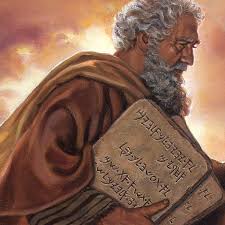 Was he, on his last day, surrounded by his eishes chayil, any of them, or his two kinderlach, remember them? Not! In fact, we haven’t heard about his two boys for months, nor his Kushite eishes chayil. Seemingly as a leader, his family came second. Interestingly, this same model has in the past and continues to play out by a number of contemporary rabbis. Ober, what was he doing? Says the heylige Toirah (Devorim 31:9) azoy: “And Moishe wrote (put on parchment) this Toirah, and he gave it to the Kohanim, the sons of Levi, the carriers of the ark of God’s covenant, and to all of the elders of Israel”. Is the heylige Toirah telling us that on this last day, Moishe was, instead of getting his affairs in order, busy writing and then delivering a Toirah scroll? Seemingly yes and at least one. And let’s taka read a givaldige medrish (Tehillim 90) which will blow you away with what it thinks really took place on his birthday. “On the day that Moishe died, he wrote 13 Toirah scrolls; 12 of them he gave to the 12 shevotim (Tribes, one Toirah for each sheyvet), and one that was placed in (or by) the ark, so that if they want to alter it, they will not be able to (i.e. the 13th scroll would be a reference to ensure that the text remained intact).” In fact, this particular Medrish is widely accepted as gospel. He did all that in one day mamish?
Was he, on his last day, surrounded by his eishes chayil, any of them, or his two kinderlach, remember them? Not! In fact, we haven’t heard about his two boys for months, nor his Kushite eishes chayil. Seemingly as a leader, his family came second. Interestingly, this same model has in the past and continues to play out by a number of contemporary rabbis. Ober, what was he doing? Says the heylige Toirah (Devorim 31:9) azoy: “And Moishe wrote (put on parchment) this Toirah, and he gave it to the Kohanim, the sons of Levi, the carriers of the ark of God’s covenant, and to all of the elders of Israel”. Is the heylige Toirah telling us that on this last day, Moishe was, instead of getting his affairs in order, busy writing and then delivering a Toirah scroll? Seemingly yes and at least one. And let’s taka read a givaldige medrish (Tehillim 90) which will blow you away with what it thinks really took place on his birthday. “On the day that Moishe died, he wrote 13 Toirah scrolls; 12 of them he gave to the 12 shevotim (Tribes, one Toirah for each sheyvet), and one that was placed in (or by) the ark, so that if they want to alter it, they will not be able to (i.e. the 13th scroll would be a reference to ensure that the text remained intact).” In fact, this particular Medrish is widely accepted as gospel. He did all that in one day mamish?
And says Toisfis (Devarim 31:26) azoy: Moishe wrote these scrolls on his last day. Why wait for the last day and why undertake a project of this magnitude? Efsher he should have been with his mishpocho or with close friends? Ober says the heylige medrish (Devarim Rabbah 9:9) azoy: Moishe davka undertook this project for his own selfish reasons; he was trying to avoid the malach-hamoves (angel of death) from coming to claim him. Moishe figured that if he was involved in this holy mitzvah, he could give the malach-hamoves the slip. In other words, Moishe (and others in Jewish history) felt that one cannot be harmed while performing a mitzvah. We assume therefore that Moishe knew that this was destined to be his last day on this earth but still wanted to change destiny. And the writing of 13 Toirahs would certainly keep him busy for a while? Ober did his plan work? Let’s go veyter and find out.
And did he have co-conspirators in trying to save him from the grip of the malach-hamoves? Maybe he did. Says another medrish azoy: the sun refused to set until Moishe finished his writings. The sun did what? Did the sun conspire with Moishe to avoid his death or did the sun not set so that Moishe would taka die when he was done writing but still on the day the RBSO selected as his Moshe’s final day on this earth? Mamish a great kasha (question) and ver-veyst? Was Moishe’s last day on this earth much longer than 24 hours? In other words: did the sun not setting allow Moishe, in one extended long day, to taka write and deliver 13 heylige Toirah scrolls? Ver veyst?
As an aside, the heylige Gemora (Sanhedrin) will tell us that years later, Dovid Hamelech (King David) would recall Moishe’s trickery and tried to ward off the malach- hamoves by learning Toirah that day?
Nu, efsher you’re klerring azoy: how was it shayich (at all possible) for Moishe or anyone else to write 13 complete Toirah scrolls in one day. Of course we all know that even the very best of soifrim (scribes), even when handsomely compensated with tens of thousands of dollars, cannot and do not deliver even one completed sefer Toirah in one day. Of course not: it’s very bad for business. People would not feel they were getting value. How then was Moishe able to write and then hand deliver as many as 13 Toirah scrolls in one day? Was he copying and scanning and then shipping using Amazon Prime or efsher drones? Or, did the RBSO perform one last miracle for Moishe on this his last day?
Nu, lommer lernin what a few had to say about this episode, one that you either never knew took place or even worse, never paid attention to the details of the words. It so happens that the Oisvorfer attends a chumish shiur where the rabbi taka focuses on the words themselves, a lost art mamish. What do the words tell us?
Says the Eitz Yosef (Devorim Rabbah 9:9; 9:4) azoy: there is no doubt that this writing of 13 Toirahs happened miraculously, for who is able to write even one Sefer Toirah scroll in one day. And says the Tzror Hamor (Devorim 31:24) azoy: holy things are done by themselves, without human help. In other words: the RBSO seemingly wrote these scrolls. And his proof: The very words of the heylige Toirah which tell us azoy: “until they were finished” (as opposed to “until he finished [writing] them”), because these 13 Toirah scrolls were written “by themselves,” or what we might in this case call Yad Hashem (the RBSO’s hand). And taka that would be a miracle but certainly one the RBSO could perform. And after what the many the Yiddin saw, would the sudden appearance of 13 Toirah scrolls in one day, surprise anyone? Not! And says the Alshich azoy: the 13 scrolls had to be and were written miraculously. And taka why? So that the Yiddin would realize that the entire Toirah kula (whole Toirah) and not just the Aseres Hadibrois (Ten Commandments) came from the RBSO. Of course, everyone accepted that the Ten Commandments were written miraculously. Shoin and now you can see how mamish a few innocuous words of the heylige Toirah take on such deep and profound meaning.
Does everyone agree? Of course not! Some suggest that Moishe didn’t actually write 1 or 13 Toirahs on his last day because that would have been an impossible feat to accomplish. Can a 120 year old man, one about to pass away, write an entire Toirah in one day? Instead, they argue that what the medrish means is that he spent his last day delivering and handing them over. They were pre-written. And believe it or not, this topic was hotly debated; did he or did he not write 1 or 13 Toirah scrolls on his last day? And the answer, like so many others, ver veyst.
In the ‘he did not write 1 or 13 camp’ they posit that it was impossible for Moishe to write 13, 1 or even one letter. Why not? Because Moishe passed away on the heylige shabbis and avada we know that writing on the shabbis, especially after the Mishkan was built, was strictly verboten. Shoin, he didn’t write. Unless of course we can kler that Moishe did write on shabbis but using a she-nui, lol. Of course you all know what a she-nui is because many of you giferliche oisvorfs have relied on this she-nui -sleight of hand trick- to get into your hotel rooms on shabbis and avada Pesach. Others of course get much more creative when using a she-nui, if you chap. Nu, thankfully Yom Kippur is schnell (quickly) approaching; just add it to the ever-growing list of chatoim (sins). Moishe died on shabbis? How do we know that? Because the Medrish (Beis Hamidrash a; 122) tells us just that: Moishe passed away on shabbis mamish at Mincha time. And as proof, they suggest that the good people that put together the siddur (prayer book), added a special tifila (prayer), the Tzidkoscha-Tzedek (during Mincha on shabbis) to mark his passing. Did that happen? Ver veyst? Was there really mincha when Moishe was alive? Ver veyst. However, as we said above, if he taka passed away on shabbis, how could he have been busy writing Toirahs? Moreover, the Rambam makes mamish no mention of any scrolls being written on the last day of his life.
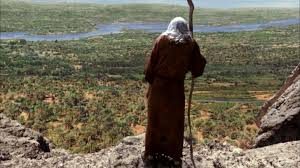 Of course not everyone agrees that Moishe died on shabbis and some argue that he died on Friday. Writing on Friday is zicher allowed and this camp believes that taka Moishe was busy writing all day. Seemingly he did not make early shabbis that day.
Of course not everyone agrees that Moishe died on shabbis and some argue that he died on Friday. Writing on Friday is zicher allowed and this camp believes that taka Moishe was busy writing all day. Seemingly he did not make early shabbis that day.
And they believe that why? Because Rashi who knew everything, commenting on the words Moishe used (Devorim 31; 2); “[Moishe] said to them, ‘I am 120 years old today, and I am no longer able to go and come…;’” quoting the heylige Gemora (Soitah 13b) said azoy: ‘Today I have completed my days and years. On this day I was born, and on this day I will die’. They believe he died on Friday.
And says the heylige Gemora that tzadikim (the righteous) taka die on the day on which they were born. And because Moishe was born on 7th of Adar, he lived out his last year and also died on 7th Adar. But wait just a minute: If Moishe completed his final year, shouldn’t he have died on 6th of Adar – the last day of his 120th year – and not on 7th Adar, which was the first day of a new year which he didn’t live to complete? In other words: Moishe could have been born on the 7th of Adar which was a shabbis and could have died on the 6th of Adar which was Friday and therefore could have written 13 Toirah scrolls that day and delivered them to each sheyvet as well. Why not? Who are we to question whether he did or didn’t and how does that impact your life today? And how does that mesh with the camp that tells us that he died on the 7th? When did he pass away? On the 6th of Adar or the 7th?
Ober Rashi himself will come to the rescue with a second understanding of what Moishe meant when he uttered the words of ‘I am 120 years old today, and I am no longer able to go and come’. What Moishe meant was that the wellsprings of wisdom from the heylige Toirah were closed before him. Though he was physically alive on this day, in his own eyes he was already dead because he was no longer able to learn Toirah. That was on the 6th of Adar. Accordingly, the 7th of Adar marks the day of his birth and his physical death, but he had completed his years of Toirah life on the 6th of Adar, one day before. Efsher we can kler that though he couldn’t learn Toirah that day, he was seemingly shut down for the season and for life, he was able to copy the words from scroll to scroll, up to 13 different times and had delivered them to the heylige shevotim and one other into the Ark. Why not? This pshat would also explain the two opinions as to when he died. Physically it might have been on the heylige shabbis, but spiritually it may have been on Friday. And maybe just after he wrote and delivered 13 Toirah scrolls. Ver veyst.
Nu, earlier we mentioned that this week we will lain the year’s last double header parsha; here then a shtikel interesting little thought to enhance your shabbis tish discussion. As it turns out, parshas Vayelech, the shortest parsha in the entire heylige Toirah is quite unique. It is the only parsha that can, under certain circumstances, be read twice in its entirety in one year. It can? This can happen during a leap year when parshas Nitzavim and Vayelech are unhinged and read on separate weeks. When that happens, Vayelech is read after Rosh Hashono. Then in the following cycle but in the same year, if the parshas are read together, Vayelech is read before the Rosh Hashono with the result being that we will have read this parsha twice in the Jewish calendar year- gishmak.
Shoin, to date, 612 mitzvois have been transmitted and there’s one left to go. It is found in our parsha; let’s read the words of #613. Says the heylige Toirah (Devorim 31:1). azoy “And now, write for yourselves this shira (song) and teach it to the Children of Israel, put it in their mouths.”
As you well know, this one sentence has been hotly debated and would take pages to cover; what’s real pshat in ‘write for yourselves’? What is the meaning of the term (shirah) “poem or song”? Who is commanded to “write down this poem”? How much is to be written and how many? Here then, the very short Oisvorfer pshat on what was told and what it really means in our times. Ershtens (first) some background.
As the Oisvorfer has told you over and over, the heylige Toirah is a also a guide to business. Read the mitzvah, chap it and exploit it. Make other Yiddin pay, handsomely of course, for its performance. Shoin. And as the writing of the heylige Toirah was coming to an end, it appears that one group of Yiddin still needed to make a better living; who was going to employ the soifrim (scribes). How were they going to make the big bucks? Ober not to worry, the RBSO had their back and if He didn’t, the various interpreters of the heylige Toirah came along and told us what the RBSO really had in mind with mitzvah #613.
Poshit geredt (plain and simple), the words tell us that the RBSO instructed Moishe to write down the very words that the RBSO was teaching him, so that Moishe could in turn give it to the people. Said Rashi: only the poem needed to be reduced to writing. Which poem? The Poem of Haazinu, next week’s parsha. Does the Toirah include poetry? We’re taught that Haazinu is a shtikel poem and is called a shira because the Yiddin, wherever they are, will forever recite it as a poem and a song. Veyter. And said the Ramban: “The plain meaning of Kisvu (write) refers both to Moishe and Yihoishua; only they were commanded them to write it down. Ober said the Ibn Ezra: the commandment is applicable “to everyone who knows how to write”, i.e. to every Israelite. And said the Ralbag azoy: “the poem is the entire Toirah from beginning to end”. Moreover, “And this was the purpose of the commandment, that each man should write a complete Toirah scroll for himself, including the poem within it, so that nothing shall be missing from all the things that are in the Toirah”.
Shoin, one day, a few enterprising Yiddin while scrolling through the Ibn Ezra and Ralbag’s commentaries had a brainstorm, mamish. A light bulb flashing dollar signs began to flash; it hasn’t stopped since. Just like that, a naya gisheft (new business opportunity) was taking shape. And ever since the writing of Toirah scrolls has become a multi-million dollars industry.
 And along came the Rambam: who said (Hilchois Sefer Toirah, chap. 7, halachah 1) azoy: “Each and every man of Israel is commanded to write a Toirah scroll for himself, as it says ‘ Therefore write down this poem…’ which means write a Toirah scroll which contains this poem, since one may not write the Toirah in separate parts”. And listen to this bombshell. Says the Rambam that from this commandment we learn that the essence of the commandment is actually to write only the poem (Parshas Ha’azinu) as stated above. Ober since one should not write partial texts from the Toirah on a parchment, therefore we were each commanded to write the entire Toirah for the sake of the poem which is within it. And…. even if the Rambam’s explanation is questionable, the law (halocho) remains as he stated it. Moreover, the heylige Gemora (Nedorim 38a) tells us that the term “poem” refers to the entire Toirah, and the command to write it is directed to every Jew.
And along came the Rambam: who said (Hilchois Sefer Toirah, chap. 7, halachah 1) azoy: “Each and every man of Israel is commanded to write a Toirah scroll for himself, as it says ‘ Therefore write down this poem…’ which means write a Toirah scroll which contains this poem, since one may not write the Toirah in separate parts”. And listen to this bombshell. Says the Rambam that from this commandment we learn that the essence of the commandment is actually to write only the poem (Parshas Ha’azinu) as stated above. Ober since one should not write partial texts from the Toirah on a parchment, therefore we were each commanded to write the entire Toirah for the sake of the poem which is within it. And…. even if the Rambam’s explanation is questionable, the law (halocho) remains as he stated it. Moreover, the heylige Gemora (Nedorim 38a) tells us that the term “poem” refers to the entire Toirah, and the command to write it is directed to every Jew.
And to further solidify the business, one day another enterprising Yid came along and found that Rabbah, in the heylige Gemora tells us that even if your parents left you a Toirah scroll, you still have to write one for yourself. In other words: it’s not just about having one, it’s about making it yourself. In reality, it’s about having one made by commissioning a scribe.
How has this mitzvah evolved? Shoin today, the commercialization of this mitzvah has turned Toirah writing into a multimillion dollar gisheft for soifrim (scribes), finishers who provide the accoutrements that adorn the heylige Toirah, musicians, photographers and of course caterers who provide food and drink at the party marking the celebration of another Toirah scroll. Shoin, one mitzvahs fulfilled, many happy vendors. Toirah is big, very big, business.
And the bottom line? As Rosh Hashono approaches efsher we can kler that inheriting the heylige Toirah may not be enough; the fact that your father or other family member was a Toirah practicing Jew may not cut it. Seemingly we need to write our own stories, our own Toirah.
A gittin Shabbis, a Ksiva va’Chasima Toivo, and a git gibentched yur! May you all be inscribed for good!
The Heylige Oisvorfer Ruv
Yitz Grossman
